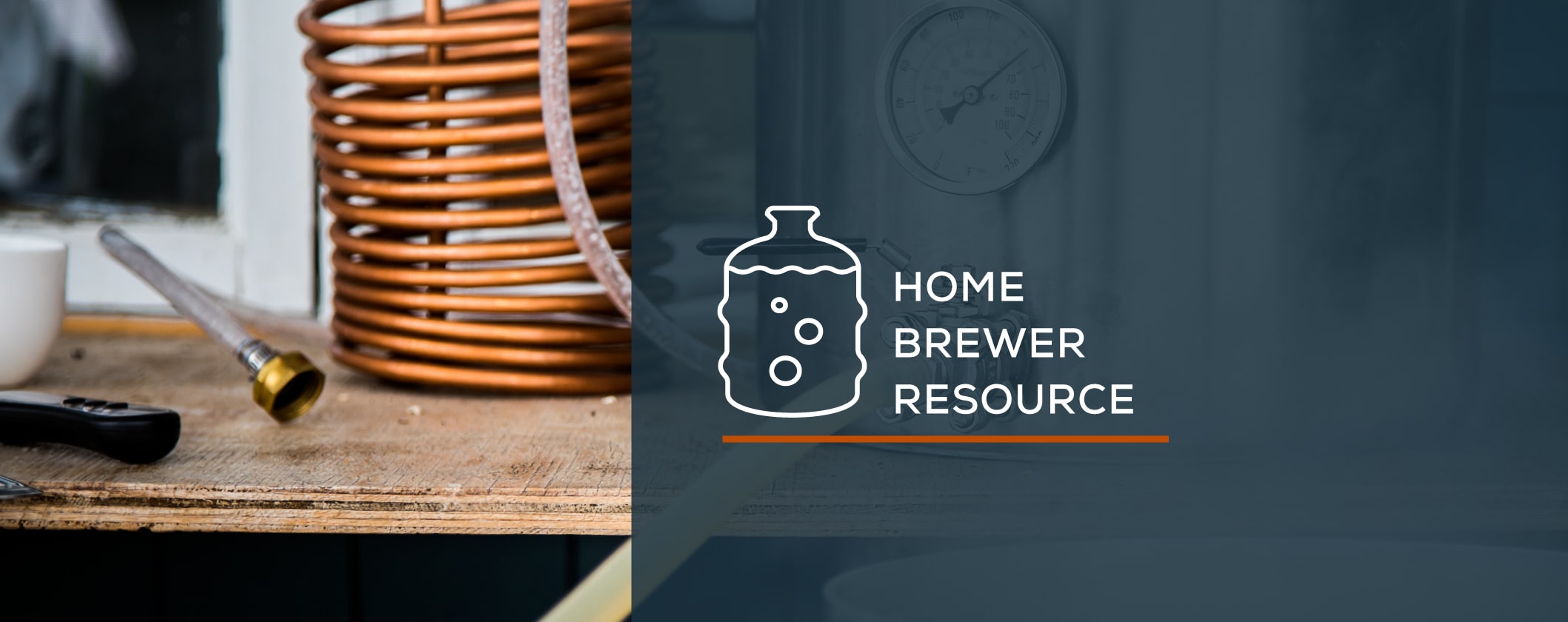Yeast Fermentation

Fermentation is the heart of the brewing process. During fermentation, wort created from raw materials is converted to beer by yeast. Fermentation is usually divided into three stages: primary, secondary, and conditioning (or lagering). Fermentation is when yeast produce all the alcohol and aroma and flavor compounds found in beer. Manipulation of temperature, oxygen levels, and pitch rate as well as yeast strain selection will all dramatically affect the production of aroma and flavor compounds produced during fermentation.
PRIMARY FERMENTATION
The primary stage of fermentation begins when the yeast is introduced into cooled, aerated wort. The yeast quickly utilizes the available oxygen to produce sterols, a vital compound for culture expansion. When the oxygen is gone, the yeast switch to the anaerobic phase where the majority of wort sugars are reduced to ethanol and CO₂. Yeast growth occurs during primary fermentation. The extent and rate of yeast growth is directly related to the production of aroma and flavor compounds.
PRIMARY FERMENTATION SUMMARY:
- Depletion of dissolved oxygen
- Acidification/reduction in pH
- Yeast growth or culture expansion
- Ethanol and CO₂ production
- Production of flavor compounds such as esters, diacetyl, sulfur containing compounds, etc.
- Consumption of most wort sugars
The temperature of the primary fermentation should be regulated according to the desired flavor and aroma profile, and within the recommended temperature range for each Wyeast strain. The following is a guideline:
PRIMARY FERMENTATION TEMPERATURES:
- Ales: 62-75 °F (17-24 °C)
- Lagers: 46-58 °F (8-14 °C) *Note: Lager fermentations can be started warmer (~60 °F/15.5 °C) until signs of fermentation (gravity drop, CO₂ production, head formation) are evident. Cool to desired fermentation temperature once signs of fermentation are observed.
- Wheat and Belgian styles: 62-85 °F (17-29 °C)
SECONDARY FERMENTATION
Secondary fermentation refers to the stage of fermentation after the majority of the wort sugars have been consumed and there is a sharp decrease in the rate of fermentation. During this period, most of the final sugars are depleted and some secondary metabolites are converted by the yeast. Yeast flocculation and settling begins to occur due to the increase in alcohol content and the depletion of sugar and nutrients. Diacetyl reduction also takes place during secondary fermentation. Depending on the beer profile standard, once the fermentation process reaches 40 to 50% attenuation the temperature is raised 3 to 5 degrees to allow the yeast to reabsorb the diacetyl and break it down to Acetoin, then into 2,3 butanediol. After determining there is no more diacetyl present, the beer cooling process starts. For more information on diacetyl reduction (diacetyl rest), please see LAGER BREWING.
SECONDARY FERMENTATION SUMMARY:
- Decreased rate of ethanol and CO₂ production
- Diacetyl Conversion
- Reduction of some flavor compounds by yeast metabolism or CO₂ scrubbing
- Terminal gravity is reached
- Yeast flocculation and settling begins
SECONDARY FERMENTATION TEMPERATURES:
- Ales: Same as primary fermentation (higher temperatures will increase diacetyl reduction rates)
- Lagers: 40-60 °F (4-15 °C). Some brewers allow the beer to increase in temperature to speed the diacetyl reduction. This increased temperature is usually only sustained for 24 to 48 hours.
- Wheat and Belgian Beers: Same as primary fermentation (higher temperatures will increase diacetyl reduction rates).
TRACKING FERMENTATION TEMPERATURE, GRAVITY AND PH:
To maintain consistency and to determine the fermentation performance, professional brewers chart the temperature, gravity, and pH of active fermentations daily. Monitoring the temperature can prevent potential issues and corrective measures can be taken at the right moment. To oversee the gravity and pH daily allows control of the fermentation progress and will provide information of the yeast performance and health condition, should the brewer plan to harvest and repitch the yeast into another batch of beer.
For homebrewing, gravity readings should be taken at the beginning and end of fermentation. If pH strips or testing equipment are available, they can provide additional information when brewing at home. Daily monitoring can be as simple as checking the air lock for bubbles (CO₂ production) and if there are any other visible changes during fermentation. A reduction in CO₂ means that fermentation is nearing completion.
CONDITIONING
The conditioning stage takes place when the terminal gravity has been reached and the tank is cooled to refrigeration temperatures (31-38 °F, 0-3 °C). During this time the yeast continues to flocculate and settle. The yeast also conditions the beer by reducing various undesirable flavor compounds. Ales do not benefit from long conditioning times like lagers do. The desirable flavors in ales will decrease with age and therefore it is recommended that conditioning be as short as possible before packaging. Exposure to oxygen at this stage is extremely detrimental to beer quality.
CONDITIONING SUMMARY:
- Most of the yeast is removed from beer
- Formation and precipitation of haze forming proteins
- Reduction and mellowing of harsh flavors
- Reduction of sulfur compounds, diacetyl, and acetaldehyde
- Flavor stabilization
If the next step for a brewery is to repitch the yeast, the brewer will first confirm that the quality of the harvested slurry has met certain viability and purity criteria at the end of the Secondary Fermentation. Since these methods are beyond the scope of most homebrewing needs, there are some simple techniques to help determine whether repitching the yeast from a homebrew is a good option.
Homebrewers can evaluate the quality of the first beer brewed with fresh yeast for any faults. The beer should taste and smell good, have the expected characteristics of the yeast strain used, and have performed well during fermentation. From here, the homebrewer can refrigerate the beer for 2-3 days to allow the yeast to settle. Then, transfer the beer from primary fermentation into another carboy to remove the yeast that has settled, and use for another time. If the first brew was sluggish, stalled, developed any unexpected or “off” flavors or aromas, the yeast should be discarded.
